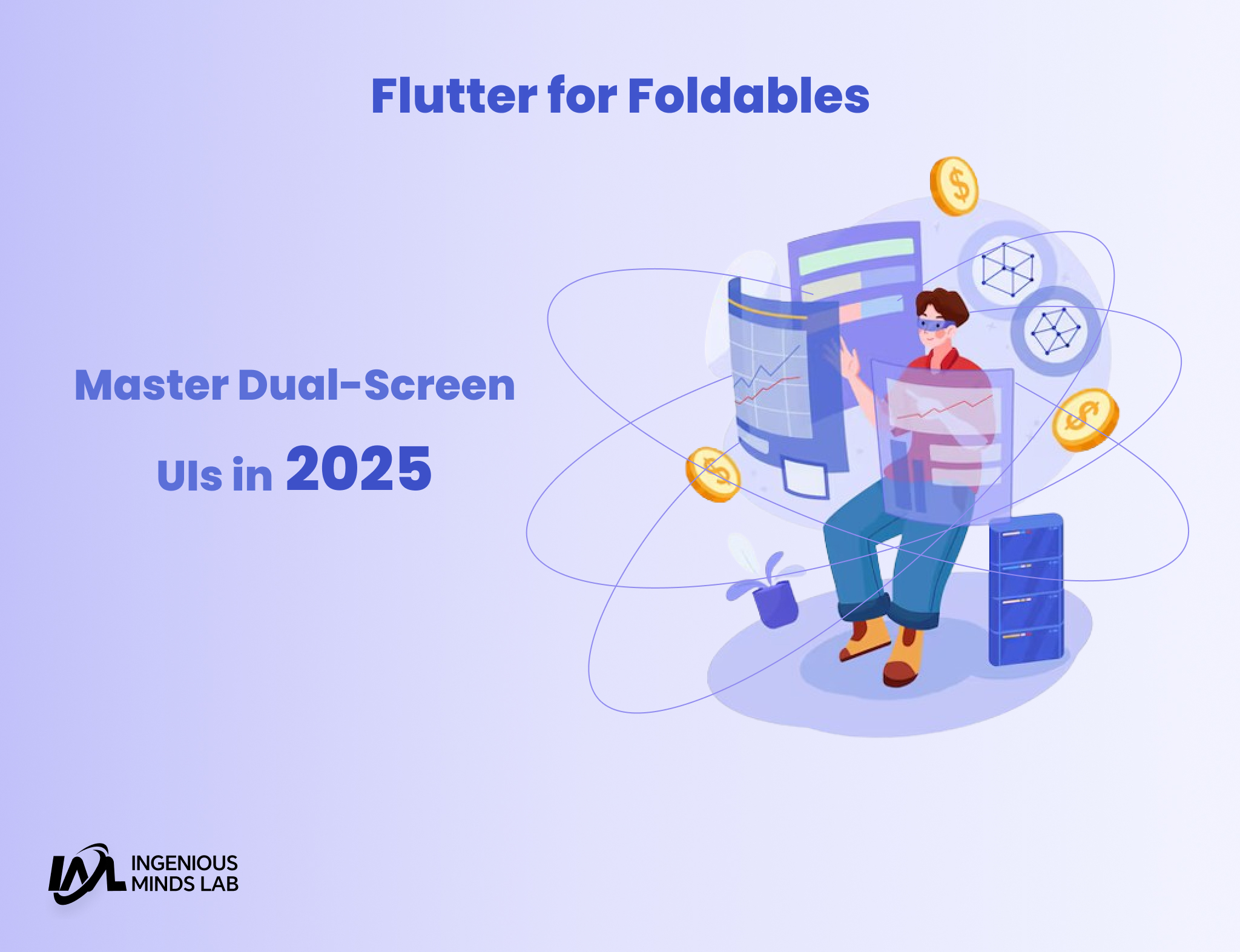Introduction
As foldable devices become more mainstream, developers face new UI challenges: hinge-aware design, dual-pane coordination, and posture adaptation. Flutter—traditionally mobile-first—is now foldable-ready. This blog helps you understand the evolving landscape of foldables and shows how to build truly adaptive UIs using Flutter’s latest layout tools and plugins. From dual-screen rendering to real-world apps, you’ll learn how to future-proof your Flutter apps for 2025’s device trends.
Understanding Foldable’s in Flutter
Foldable phones like the Surface Duo and Galaxy Z Fold introduce unique UI demands. Unlike tablets, foldables often contain hinges or flexible screens that affect layout continuity and interaction. Flutter’s core API now supports foldables via DisplayFeature objects, which provide hinge dimensions and orientation directly from MediaQuery. By leveraging this, you can create apps that adapt to single and dual-panel postures seamlessly, ensuring a smooth user experience regardless of how the device is folded or rotated.
Setting Up Your Environment
To begin building foldable-ready Flutter apps, start by setting up your dev environment. Add the dual_screen plugin by Microsoft in your pubspec.yaml for Surface Duo support. Use the Surface Duo emulator for dual-screen simulation, or Android Emulator with the foldable device configuration. Optionally, include the multi_screen_layout package for more refined screen behavior utilities like TwoPageLayout and hinge-angle responsiveness. These tools will prepare your app to detect display features and respond to layout changes in real time.
TwoPane Layout Example
Flutter’s TwoPane widget allows developers to split the UI across two virtual pages—ideal for dual-screen devices. It adapts depending on screen configuration: on a flat tablet, the panes sit side by side; on a folded phone, one pane moves below. Here’s a code sample to get you started:
You can configure proportion, order, and visibility based on hinge detection. This dynamic split approach improves productivity and multitasking in foldable interfaces.
Advanced Layout Patterns
Beyond basic splits, you can implement smart layouts like MasterDetailLayout, ideal for emails, to-do apps, and dashboards. Use MultiScreenInfo to sense fold state and orientation. Build layouts that shift seamlessly between portrait, book, and tent modes. Detect the hinge to avoid placing touch targets in unreachable zones. By crafting layouts with conditional rendering using LayoutBuilder and hinge metadata, you ensure the UI feels native to the foldable experience—not just stretched mobile screens.
Design & UX Best Practices
Foldables introduce both power and complexity. Avoid placing essential UI elements near the hinge or fold crease. Maintain continuity between panes for flow, but also respect spatial separation for distinct tasks (like preview vs. edit). Use animations and gestures that react intuitively to posture shifts. Ensure readability and touch target sizing dynamically adapt. Always test against multiple postures (flat, L-shape, Z-shape) and fold angles to avoid jarring transitions. Follow Material Design guidelines for large and adaptive screens for consistency.
Real-World Examples
To solidify your knowledge, explore real apps that demonstrate foldable support:
Microsoft’s Surface Duo Notes App: uses TwoPane for editing and preview.
Community demo: Email Reader with Master‑Detail using multi_screen_layout.
Flutter + Markdown Editor: a layout that shows markdown preview on one pane and editable input on the other—perfect for productivity tools.
These examples show how to adapt one codebase for both traditional and foldable screen contexts without breaking UX flow.
Tips & Performance Optimization
Efficient UI on foldables requires performance awareness. Profile your app with DevTools while emulating posture shifts to identify layout jank. Avoid widget rebuilds when possible by using const constructors. Place heavy UI logic in separate panes, and lazy load content based on pane visibility. Use hardware acceleration wisely when rendering dual-screen animations. Remember: foldable users expect fluid transitions and zero-lag interaction across both screens.
Conclusion & Call to Action
Flutter is no longer limited to smartphones. As foldables, dual-screens, and large devices become common, building responsive UIs is no longer optional—it’s essential. With tools like dual_screen, TwoPane, and advanced layout builders, you can future-proof your Flutter apps for any screen configuration. Start small with dual-pane navigation, and scale your UI for all postures and devices. And if you found this useful, do visit my other blogs for more Flutter deep-dives and hands-on development guides!.
- https://ingeniousmindslab.com/blogs/agentic-ai-vs-ai-agent-key-differences-you-should-know-before-making-your-choice/
- https://ingeniousmindslab.com/blogs/how-to-build-an-ai-model-a-step-by-step-guide/
- https://ingeniousmindslab.com/blogs/best-llm-tools-run-ai-models-offline/
